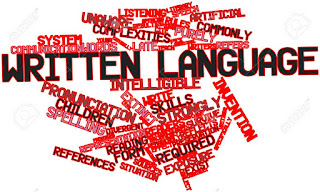Introduction:
- Reading is one of the four basic skills needed to gain competence in mastering a language.
- It is a written receptive skill.
- To achieve full comprehension, it is necessary interaction between the information given and the reader’s expectations.
Reasons for reading and text selection
- The ability to read effectively is fundamental for survival in our western society.
- Whenever we read, we have a specific purpose in mind
- Sometimes, we read simply to get the gist of the text or to locate a concrete piece of information.
|
Reasons for reading
|
Text selection
|
|
To get information
or search for information
|
Travel brochures
Train timetable
Bus schedules
Public signs
Weather forecasts
Menus
Internet: web sites
|
|
To satisfy to
curiosity about a topic
|
Magazine articles
Newspaper editorials
Advertisements
Internet
|
|
To follow
instructions
|
To know how to use a
game
Recipes
Maps
|
|
To keep in touch
|
Postcards
Letters
Notes
Messages
Invitations
Emails
|
|
To find out when and
where
|
Announcements
Programmes
|
Tips to text selection:
- Texts should be adapted to the learner’s cognitive development.
- Texts should cover a wide variety of topics in order to reflect the diversity of interests present in the classroom.
- Texts should enhance motivation and promote self-esteem.
- Texts should reflect situations where the learner can activate his/her schemata and enrich the interpretation.
- Text should introduce some of the most important cultural references of the target language.
- The selected texts should be the result of a needs analysis.
- By means of a needs analysis, the teacher can gather a great deal of valuable information which will result in a more accurate selection of the reading material.
|
Types of knowledge
|
Examples
|
|
Syntactic knowledge
|
Position of articles
Position of auxiliary
verbs
Position of adjectives
and adverbs
|
|
Morphological knowledge
|
Word formation
(affixation, compounding…)
Cohesive devices
|
|
General world knowledge
|
Background knowledge
|
|
Sociocultural knowledge
|
Cultural references
|
|
Topic knowledge
|
Previous ideas related
to the content
|
|
Genre knowledge
|
Science fantasy novel
Tale
Poems
|
Characterisctics
of written languae
Differences
in comparison to spoken language.
|
Permanence
|
The reader can
access the information in the written forms as many times as needed. Oal language,
on the contrary, vanishes after being uttered.
|
|
Processing time
|
The processing time
needed to decode the information is greater and readers can read at their own
rate.
|
|
Distance
|
The context in which
the text is written is different from that in which it is read. Consequently,
readers interpret the written material using their background knowledge and
trying to minimise the effect of the passing of time and sociocultural
conventions. Besides, the reader cannot confront the author and question
him/her about the text.
|
|
Orthography
|
Written language is
materialised through graphemes. These are accompanied by punctuation marks,
pictures, charts. Thus, it may be more difficult to interpret written language
than oral language since this is enriched with suprasegmental features
(stress, rhythm, juncture, intonation, pauses, volume, voice quality
settings) and non-verbal language (gestures)
|
|
Complexity
|
Written language
tends to have longer clauses and more complex sentences than spoken language.
|
|
vocabulary
|
Written language
usually presents a more varied and a more formal lexical register. The writer
makes use of more precise lexical items since he/she has more processing time
and lower-frequency words often appear.
|
|
Formality
|
Written language
makes use of conventionalised forms which enable the reader to recognise the
type of text. In addition to this, a written text presents some rhetorical
devices which the reader should know in advance in order to make sense of it.
In Brown’s words (2001:306): “…conventions like paragraph topics,… a logical
order for, say, comparing and contrasting something:… openings and closings;
a preference for non-redundancy and subordination clauses, etc.”.
|

No comments:
Post a Comment